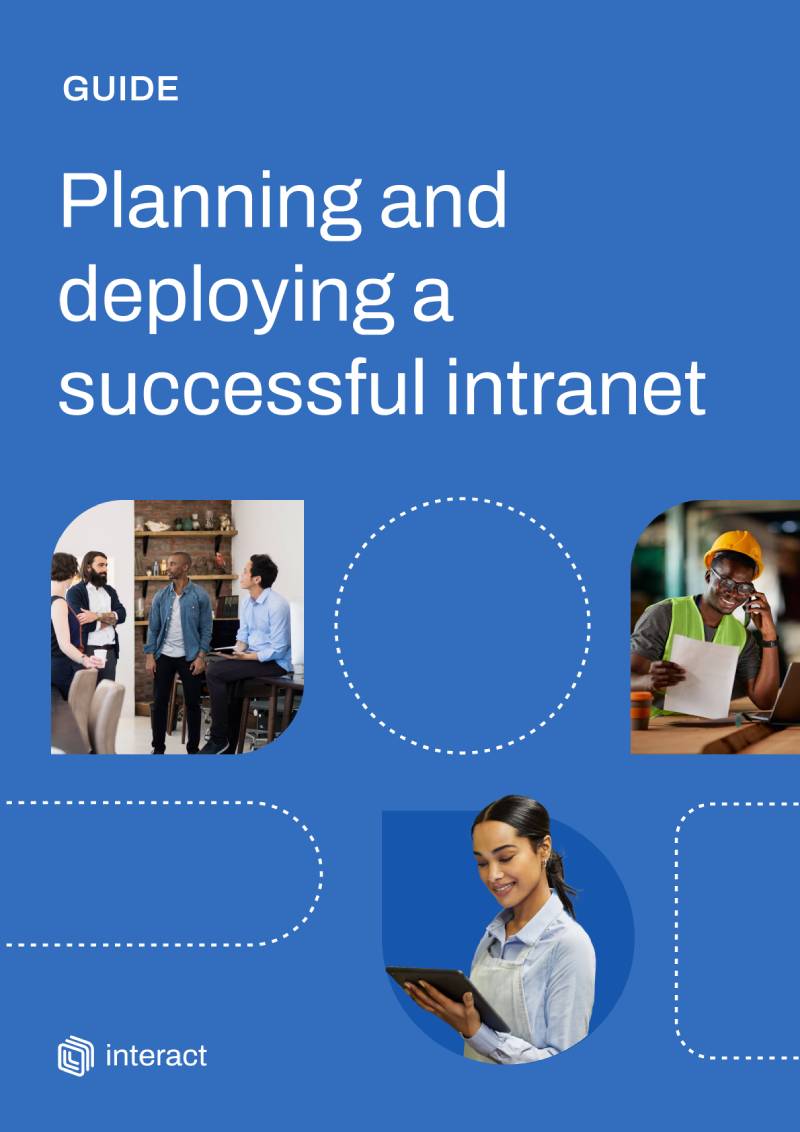Disengaged employees cost businesses millions of dollars every year in lost productivity and recruitment costs. So, what steps do employers need to take to prevent this disengagement, and how can utilizing the digital workspace help?
To reach optimal productivity levels, organizations must ensure that employees are engaged within their daily roles. Neglecting this vital step could mean they may be headed for trouble. Digital workspace solutions are designed to help businesses easily manage this engagement, to inspire and encourage employees. Having an involved and motivated workforce has many substantial business benefits. When morale is high, productivity and performance increase exponentially, staff attrition drops, and workplace culture thrives.
Those who are passionate about their job connect to their employer. They have deep-set loyalty and unabated enthusiasm, and most importantly, they care about the brand’s reputation. Engaged employees are more likely to become employee advocates or brand ambassadors, providing a significant impact and influence on the external business. They enjoy coming to work and feeling part of something bigger than their daily role.
Successful employers generally agree that employee engagement is essential for a business to prosper. And at the same token, disengagement has a detrimental effect. Emotionally detached employees often damage their own career prospects and demotivate their teammates. They can even impact workplace culture. But what causes employees to become disengaged in the first place?
The warning signs

It will certainly help to be aware of the red flags of a disengaged employee. The situation can be rectified positively once any warning signs have been identified and dealt with. If spotted early, the business should take the appropriate steps to prevent any lasting damage. Recommended action involves getting a handle on productivity, rectifying any mistakes, and ensuring that team morale hasn’t been affected too greatly.
Recommended action involves getting a handle on productivity, rectifying any mistakes, and ensuring that team morale hasn’t been affected too greatly.
There are many reasons that could cause an employee to become dissatisfied in their role. Looking out for an evident change in behavior is the most obvious sign that something has shifted in their attitude to work. An employee who used to contribute heavily in meetings, but now sits quietly, could struggle with disengagement. Perhaps someone is deliberately isolating themselves from their team members when previously they were making more of an effort. A sudden lack of interest in all work-related social events shows that things aren’t necessarily all fine professionally.
Tasked with improving your internal comms?
Keep an eye out for repeated mistakes, as this is another red flag. Everyone makes them, but frequent and silly blunders can signify that the employee is losing interest, particularly if they aren’t learning from errors each time. Disengagement can affect employees and their surroundings, but it’s not just colleagues who can bear the brunt. Customers, too, can start to feel the impact, and that’s when things can really take a turn for the worst.
When disengagement starts to impact customers

When a customer expects top-class service and doesn’t receive it, they remember. And if an employee is feeling disengaged from their role, this can influence the customer service they provide. This situation can quickly turn into a nightmare for any business. If a customer feels like they have been handled poorly or received any negative emotion from an employee, they are unlikely to leave with an optimistic view of the company. It may stop a purchase or transaction from becoming a reality, and if not, they certainly aren’t likely to recommend the business to their peers. They could even leave bad reviews online or on social media if the customer experience warranted it.
Good customer service defines most companies, and the external value of this cannot be understated.
Disengaged employees are unlikely to go above and beyond for customers. Good customer service defines most companies, and the external value of this cannot be understated. Unfortunately, when workers aren’t enjoying their day-to-day and don’t feel connected to their employer, they don’t pass that goodwill onto the customer and won’t make an effort to build a relationship with them. This negative attitude is contagious and, in turn, it could increase customer churn and lead to service dissatisfaction.
The impact on recruitment

Disengaged employees do not exist in a bubble. Those who are openly dissatisfied may bring the overall tone of the workplace down. This can have an impact on many layers of the business, and might even affect the positive mentality of colleagues. That’s why it’s so important to get a handle on the root cause of disengagement before it really takes hold.
Recognizing and measuring employee engagement links the business to its employees. It gives an impression of collaboration, motivation, and productivity across the digital workspace. In addition, it also strongly indicates the workforce’s commitment to the company and their likelihood to stay long term. Employees that do not feel motivated or dedicated have no loyalty to their employer and are more likely to leave if the opportunity arises. They could even take high-performing or popular colleagues with them, leaving gaps in teams and a headache for recruitment.
Actively disengaged employees will be imagining a future within a different workplace. They are not likely to recommend the business to their friends and will not take a role in promoting any recruitment on social media. They are essentially operating as the opposite of an employee advocate, more likely to taint a new starter’s opinion of the company than encourage it.
If a disengaged employee eventually leaves, they take with them all of their expertise. Any money or training invested into them also disappears, and the business now has to spend time and effort looking for a new hire. So getting a handle on employee engagement, and dealing with any complaints before they become a big issue, can directly impact staff retention and avoid this loss entirely.
How the digital workspace helps to reconnect

There’s a strong, proven link between an engaged workforce and a thriving business. It’s clear that ensuring your employees are connected to each other and the wider business means a greater chance of success for financial targets and professional goals.
The digital workspace motivates employees to collaborate and communicate. It forges business relationships across the organization and ensures that transparency is the foundation of an essential business strategy. This helps disengaged employees feel more connected and better informed, not isolated from ongoing business operations and changes.
Tasked with improving your internal comms?
A digital workspace can be vital at tackling any loss in productivity, as well as openly boosting workplace culture and promoting the organization’s benefits. Here are our top five tips on how to use it to reconnect with employees that may be suffering from workforce disengagement:
1) Identify problem areas

The first step to tackling disengaged employees is to work out exactly what and where the problem is. Have there been any significant business changes this year, a new senior leader who perhaps isn’t fitting in, or budget cuts to a particular department? Clarifying these is the first step to working out the root of the disengagement.
Identifying any red flags could even be as simple as checking the metrics and analytics from the organization’s intranet software. If someone that used to be very active on the work intranet and had a high engagement, suddenly stops, this could be a warning that they might be less than satisfied with their status in the business. And if someone hasn’t logged onto the work intranet for many weeks or months, and they used to be a daily user, this could be another indication.
2) Plan engagement through the digital workspace

Ignoring the problem of disengagement is not an option. It needs to be dealt with head-on and not avoided, otherwise, it is at risk of snowballing. Having positive internal communications as part of an engagement strategy is one way to try and turn the conversation around.
Channeling this lack of motivation through a digital workspace can help to significantly impact the attitudes of any disengaged workers. Putting together an engagement strategy that promotes workplace culture and reminds employees of the positives and benefits of their organization can significantly decrease the stagnation that some feel when they are disengaged.
Having positive internal communications as part of an engagement strategy is one way to try and turn the conversation around.
No one wants to feel isolated in their daily role. Having a clear communication strategy as part of a digital workspace can importantly define an organization’s culture. It bridges gaps amongst managers and their teams, between senior leaders and the wider business, and even globally.
3) Show employees that you value them

The way we communicate has a stark impact on our daily work life. If employees are hindered with micromanagement or inundated with mundane tasks, they don’t feel valued. Therefore, they are likely to become increasingly disengaged. Reminding employees that the company appreciates them can be simple. Perhaps sending out a Pulse survey to gauge the overall feeling of the workforce. In periods of high stress, undertaking some wellbeing activities can be valuable. For a more long-term strategy, review or expand the standard benefits package, and perhaps looking at flexible working arrangements to increase overall morale. Don’t forget, internal communications should always be utilized to promote any exciting changes via the digital workspace.
Tasked with improving your internal comms?
If employees feel like they have support and good perks at work, they are much more likely to be productive and motivated. Enticing with exciting benefits that they appreciate, allows the organization to connect with them on a meaningful level and reignite that lapsing professional motivation. Remember though, employees are unique, and it doesn’t always help to pigeonhole them into one way of working or another. Some may value flexible working; others may enjoy an exciting and sociable workplace where after-work drinks are standard. It’s down to the employer to figure out what makes them tick, or let them choose.
4) Create new channels for engagement

A successful digital workspace eliminates traditional workplace barriers and allows employees from all over the world to converse with each other. Using communities and forums brings like-minded people together, whether they work in the same office or not. This, in turn, keeps employees connected and provides them with the tools they need to engage.
Having a thriving digital workspace also gives an opportunity to exchange feedback about what is and isn’t working in the organization. When employees feel like they have a voice, they can be more focused on their daily tasks and efforts. This two-way street between all levels of employees and senior leadership provides a unique opportunity to flag any unsatisfactory business changes. Having these open channels of communication increases employee feedback; any complaints can be quickly dealt with before they morph into disengagement.
5) Encourage a good work-life balance

Fostering and encouraging a good work-life balance not only helps to tackle disengagement but also stops employee burnout. It allows for a healthy distance between the workplace and home life, which is an excellent way to improve engagement and productivity.
If employees feel pressured or rushed, they are more likely to make mistakes. Those that are overtired from working excessive hours are also likely to feel negatively towards their employer. Promote the importance of taking breaks and using legal holiday entitlement through the digital workspace, so employees do not feel guilty for well-deserved time off.
As the digital workspace naturally evolves through technology and software, so does the opportunity to tackle employee disengagement. It has united global workforces and increased collaboration for employees. When utilized correctly, it can significantly impact the adverse effects of the disengaged workforce and aim to turn things around for the better.






